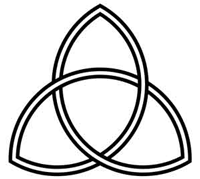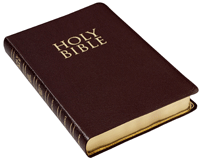| Admin | ||
| Home | Contents | |
| H&S Policy |
Safeguarding | |
The Church & The World
Church & World
Church & World
Things Past
People & Features
People & Features
Modulo - The Big Picture
Giving Life Meaning
Giving Life Meaning

Module 0 - A Firm Foundation
(Click on any Title in blue to go to that Module)
(Click on any Title in blue to go to that Module)
Print this page

Module 0/0 - Introduction

Welcome to Modulo 0, designed for newcomers to Christianity, and for those who would welcome a review of the basics before going deeper.
For both of you, this Module 0 is designed to provide a 'Firm Foundation' before moving on to explore the other Modules.
If you know the basics of Christianity, or have already done Modulo - The Basics, you can skip this Module 0 and go straight to Module 1, which includes a short revision, so you won't miss out.
All the Modules give Bible references - you may like to look-up some of them to give authority to the material presented.
All the Modules give Bible references - you may like to look-up some of them to give authority to the material presented.
(Return to top)
For both of you, this Module 0 is designed to provide a 'Firm Foundation' before moving on to explore the other Modules.
If you know the basics of Christianity, or have already done Modulo - The Basics, you can skip this Module 0 and go straight to Module 1, which includes a short revision, so you won't miss out.
All the Modules give Bible references - you may like to look-up some of them to give authority to the material presented.
All the Modules give Bible references - you may like to look-up some of them to give authority to the material presented.
(Return to top)
-
Big Picture - Module 0 Menu
- 0/0: Introduction (this page)
- 0/1: Does God Exist?
- 0/2: What's God Like?
- 0/3: Finding God For Yourself
- 0/4: Finding God From Others
- 0/5: Using the Bible
- This Module 0 answers the six most common questions enquirers ask.
(Return to Big Picture Menu)
Module 0/1 - Does God Exist?

No one can prove God exists, but equally no one can prove he doesn't either. There are several ways this question can be answered, but one of the most common, and probably the easiest to understand, is to look at creation all around us, and that's the approach we use.
(Return to top)
(Return to top)
- It's good to put God first, so we first address the question:
1. Who is God?
2. Who am I?
3. How can I be happy?
(Return to Top)
Module 0/2 - What's God Like?

If we can accept that God does (or might) exist, the next obvious question is 'What's he like?' For Christians, the answer is a Holy Trinity' but that can be a difficult idea to grasp, so this Module attempts to explain it.
It's an important question as it's fundamental to the answer of why God created the universe, why he acts as he does and why we're here. Understanding this helps give life meaning.
(Return to top)
It's an important question as it's fundamental to the answer of why God created the universe, why he acts as he does and why we're here. Understanding this helps give life meaning.
(Return to top)
- Once we know what God is like we can ask:
4. What is the spiritual world?
5. Why is there suffering?
6. What happens when I die?'
(Return to Top)
Module 0/3 - Finding God For Yourself

The best way to get to know someone is to meet with them regularly and talk with them - and it's the same with God. So to have a relationship with God we need to talk with him too, and prayer is one of the important ways we do that.
We address the questions 'What is prayer?' 'How can I make time to pray in a busy life?' and 'What shall I say?'
(Return to top)
We address the questions 'What is prayer?' 'How can I make time to pray in a busy life?' and 'What shall I say?'
(Return to top)
- Answers are given to the additional questions:
7. Is it more than talking to yourself?
8. Does God answer?
- Module 6 provides a 'Simple Guide to Prayer' plus sample opening and closing prayers you can use with the other Modules.
(Return to Top)
Module 0/4 - Finding God From Others

Another important way of getting to know God is by finding out what others have experienced before us, and the Christian holy book called 'The Bible' is a good source for that.
We look first at differences between the way people wrote in Bible times and the way we write today, which helps us to understand the Bible better, then at the account of creation in the Bible and our early ancestors' attempts to understanding the world around them.
(Return to top)
We look first at differences between the way people wrote in Bible times and the way we write today, which helps us to understand the Bible better, then at the account of creation in the Bible and our early ancestors' attempts to understanding the world around them.
(Return to top)
- The Greek word for 'to be born' is 'Genesis', which is the title of the first book, as it reveals the birth of creation and the beginning of history.
(Return to Top)
Module 0/5 - Using The Bible

Module 0/5 introduces the Bible. If you're already familiar with the Bible, you can skip Module 0/5, or you might prefer to read it as a useful revision.
'The Bible' is the Christian Holy Book which contains details of earlier people's experience of God. It's written by humans, so limited by human language and knowledge, but it's inspired by God, so it's often called the 'Holy' Bible'. The title 'Bible' is a Greek word that just means 'Books'. It's divided into two sections, the Old and New Testaments.
The Old Testament (OT) covers the centuries from the creation of the universe to just before the coming of Jesus in human form and is written in many different styles including: Story (both factual and symbolic); Law; Wisdom; Proverbs (tips for living well), and Prophecy - predictions of future events. Module 0/5 gives a description of these different sections and a brief description of each book's principal content.
The New Testament (NT) reveals the birth, life, death and resurrection of Jesus Christ, what his followers did immediately after he returned to heaven, and a vision ('Revelation') of how it will all end. The content of the New Testament is described in Modules 2 and 3 so we don't include a summary here.
There's usually a list of books, with the abbreviation used for their name, and the page number they start on, shown in the 'Contents' section of most Bibles. To help us find a specific place, each book in the Bible is divided into 'chapters' and 'verses', usually written in the form:
'The Bible' is the Christian Holy Book which contains details of earlier people's experience of God. It's written by humans, so limited by human language and knowledge, but it's inspired by God, so it's often called the 'Holy' Bible'. The title 'Bible' is a Greek word that just means 'Books'. It's divided into two sections, the Old and New Testaments.
The Old Testament (OT) covers the centuries from the creation of the universe to just before the coming of Jesus in human form and is written in many different styles including: Story (both factual and symbolic); Law; Wisdom; Proverbs (tips for living well), and Prophecy - predictions of future events. Module 0/5 gives a description of these different sections and a brief description of each book's principal content.
The New Testament (NT) reveals the birth, life, death and resurrection of Jesus Christ, what his followers did immediately after he returned to heaven, and a vision ('Revelation') of how it will all end. The content of the New Testament is described in Modules 2 and 3 so we don't include a summary here.
There's usually a list of books, with the abbreviation used for their name, and the page number they start on, shown in the 'Contents' section of most Bibles. To help us find a specific place, each book in the Bible is divided into 'chapters' and 'verses', usually written in the form:
Book, Chapter : Verse
eg: Gen 1:5 = Book of Genesis, chapter 1 : verse 5.
Gen 1:1-28 = Book of Genesis, chapter 1 : verses 1-28 inclusive.
Ch = The Whole Chapter
(Return to top)
eg: Gen 1:5 = Book of Genesis, chapter 1 : verse 5.
Gen 1:1-28 = Book of Genesis, chapter 1 : verses 1-28 inclusive.
Ch = The Whole Chapter
(Return to top)
- In many Bibles, the Old Testament contains 39 books from Genesis to Malachi.
- In some Bibles, especially those produced more recently, The Old Testament has an additional 15 books from Tobit to 2 Maccabees called 'The Apocrypha', which is the Greek word for 'hidden', because they were left out or hidden from earlier versions.
- The New Testament contains 26 books, but some Bibles group them differently.
(Return to Top)
 St Mary's Church, Dymock
St Mary's Church, Dymock